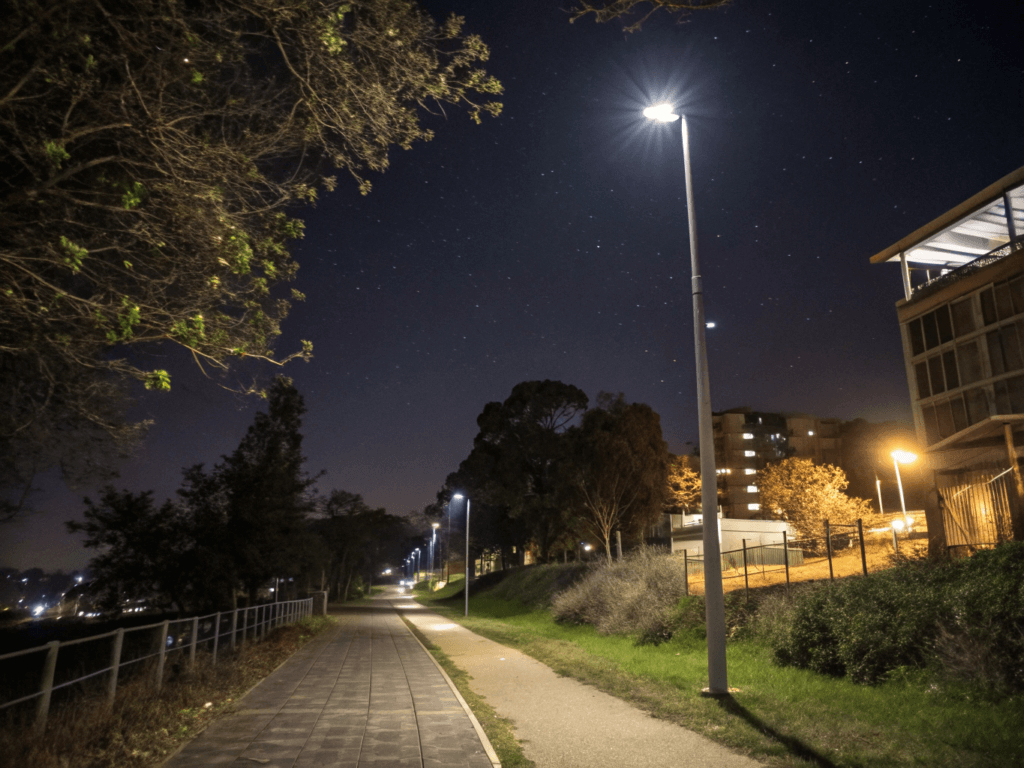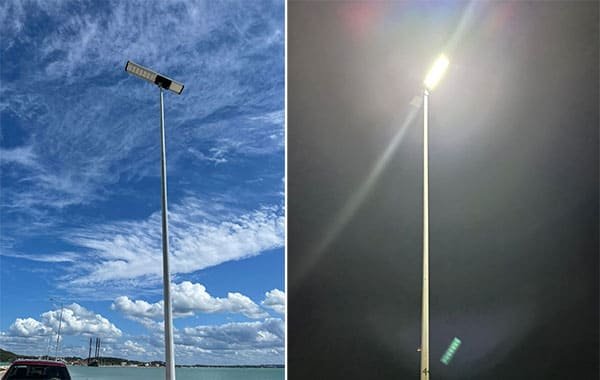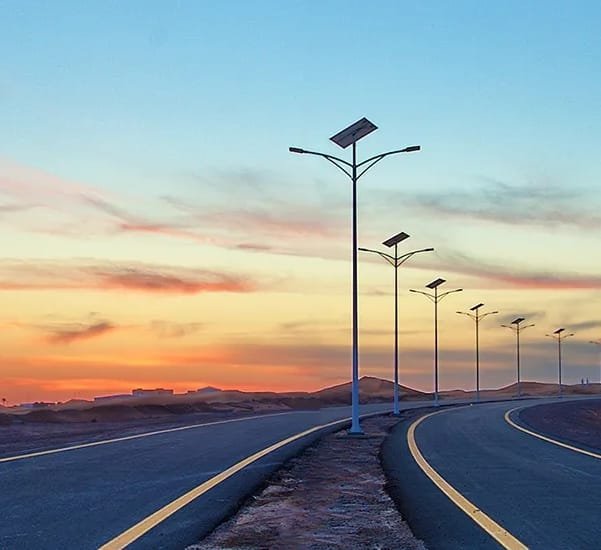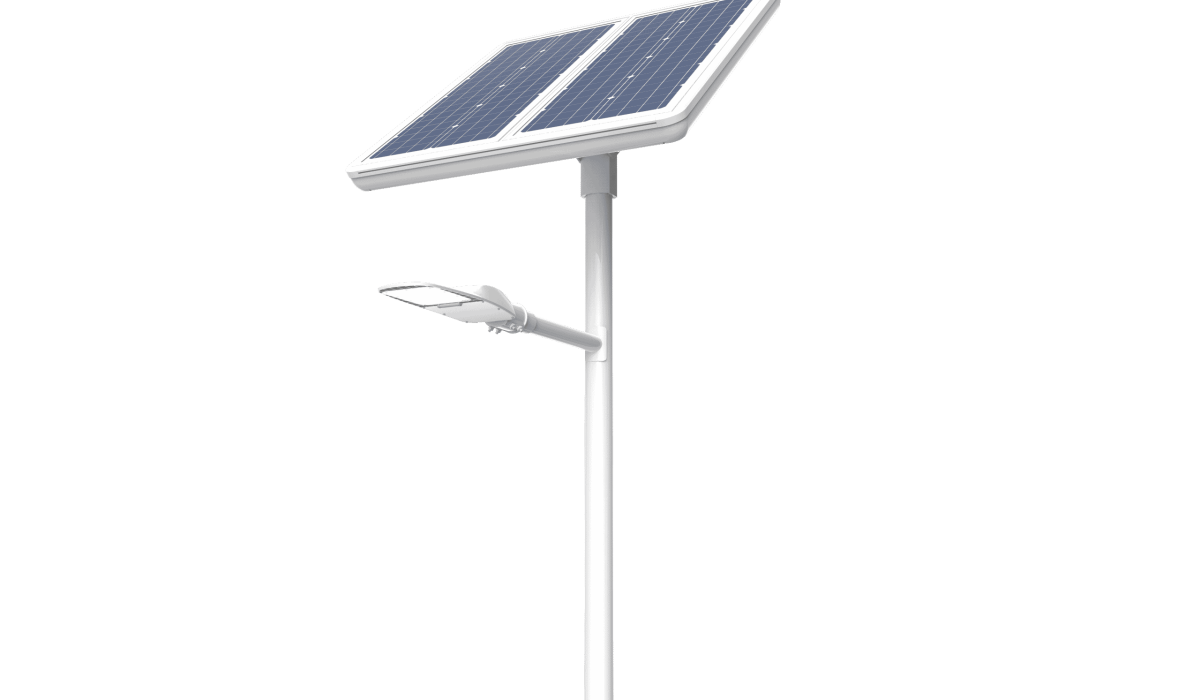A wobbly or leaning light pole isn’t just a cosmetic problem—it’s a safety risk that can lead to equipment damage or injury.
The three most common reasons a light pole becomes unstable are a bad foundation, loose anchor bolts, and skipped wind or soil calculations. Each one is preventable.
In this guide, I’ll break down these critical mistakes and show you how to identify and fix them, whether you’re installing new poles or maintaining existing ones.
Mistake #1: Improper Light Pole Foundation Depth or Design?
Most pole failures start underground. If the base isn't deep or strong enough, the pole will shift or lean over time.
A light pole foundation that’s too shallow or poorly designed can’t resist wind or soil movement, leading to instability.
Why Foundation Depth Matters for Light Pole Stability
As a rule of thumb, the foundation depth should be at least 10% of the pole’s height, and more if:
- The soil is loose or sandy
- The location experiences high winds
- The pole supports heavy fixtures
| Pole Height | Minimum Foundation Depth |
|---|---|
| 10 ft | 1 ft |
| 20 ft | 2 ft |
| 30 ft | 3 ft or more |
Concrete must fully cure before the pole is loaded. Incomplete curing reduces strength and accelerates cracks.
Signs the Light Pole Foundation Is Failing
- Leaning pole (even slightly)
- Gaps between base plate and concrete
- Visible cracks around the footing
- Pole sways noticeably in wind
In one project I reviewed, a city street light leaned just 3° but was later found to have a cracked foundation slab due to shallow depth and loose backfill.
How to Fix or Reinforce a Shallow Light Pole Foundation
- Excavate around the base and pour a concrete collar to extend footing width
- Use chemical anchors to retrofit stronger bolt attachments
- If the pole is removable, redesign and rebuild the foundation to spec
- Consider precast concrete bases for consistent quality and faster installs
Consult an engineer for retrofit design if the pole serves public areas or carries added loads like banners or cameras.
Mistake #2: Loose or Misaligned Anchor Bolts on the Light Pole Base?

Loose anchor bolts are a hidden danger. The pole might look fine—until it doesn’t.
Anchor bolts that aren’t torqued or aligned properly allow movement, leading to vibration, fatigue, and even total pole failure.
How Loose Bolts Compromise Light Pole Stability
- The pole “rocks” slightly at the base
- Gaps appear between washers and the base plate
- Pole shifts with wind or after rain
This is especially common in poles installed without using a bolt template during the concrete pour.
Why Bolt Tensioning and Leveling Matters During Installation
- Use a torque wrench to meet specified bolt tension (e.g., 90–120 ft-lbs)
- Check alignment using a leveling plate or plywood jig
- Install lock washers to prevent bolts from loosening over time
A tilted base plate causes uneven weight distribution—accelerating wear on certain bolts and increasing the chance of cracking.
How to Re-Tighten or Replace Damaged Anchor Bolts
- Shut down power to the pole
- Check torque on each bolt using a calibrated wrench
- If stripped or corroded:
- Remove the nut
- Clean threads with a wire brush
- Apply anti-seize compound and install a new nut
- For broken bolts:
- Drill and install epoxy anchor systems rated for structural loads
Safety Note: Always brace the pole before working on base bolts.
Mistake #3: Skipping Wind Load or Soil Condition Calculations?

Poles don’t exist in a vacuum—they face wind, storms, and shifting soil every day.
Ignoring local wind and soil conditions during planning leads to poles that lean, crack, or even collapse in extreme weather.
The Role of Wind Load on Light Pole Stability
Each site has its own wind zone rating. For example:
| Region Type | Wind Load (mph) |
|---|---|
| Coastal | 120–160 mph |
| Inland Rural | 90–110 mph |
| Urban High-Rise | 110–140 mph |
Taller poles and larger fixtures increase wind resistance. Add wind load to your base calculations before finalizing pole size or anchor depth.
How Poor Soil Conditions Can Undermine the Light Pole
Loose or wet soil reduces friction and bearing capacity.
| Soil Type | Risk Level | Recommendation |
|---|---|---|
| Sandy/Loose Soil | High | Increase depth, add concrete collar |
| Clay | Medium | Ensure drainage and proper curing |
| Compacted Fill | Low if tested | Use rebar cages and engineered footing |
How to Correct a Light Pole Affected by Environmental Factors
- Re-drill foundation with soil auger and replace with a deeper base
- Add geotextile or gravel for better drainage
- Use soil stabilizers or admixtures to harden soft ground
- Upgrade to helical piles or deep pier footings for tall poles or wet sites
I had a project in Ghana where a pole kept tilting despite concrete reinforcements—it turned out the subsoil was swampy clay. We solved it with a combination of gravel fill and deeper pier footings.
Bonus: Other Factors That Make a Light Pole Unstable?
Stability isn’t just about the foundation—installation technique matters too.
Incorrect pole sizing, poor backfill, or vibration from traffic can all reduce stability over time.
- Improper Backfilling: If soil isn’t compacted layer by layer, it will settle unevenly and tilt the base.
- Traffic Vibration: Poles near highways or heavy machinery need dampers or isolation pads.
- Oversized Fixtures: Adding too many luminaires or heavy attachments changes load dynamics.
Make sure your pole size, base, and attachments are balanced and approved by a structural engineer if needed.
Quick Stability Checklist for Light Pole Installations

| Question | Target Answer |
|---|---|
| Is the foundation ≥10% of pole height? | Yes |
| Are all anchor bolts torqued to spec? | Yes |
| Is base plate level and tight to foundation? | Yes |
| Has wind load been calculated? | Yes |
| Was soil condition tested? | Yes |
Use this list before every project handoff or site inspection.
FAQs About Unstable Light Poles
Can I re-straighten a leaning light pole without re-digging the foundation?
Sometimes, using a jack and concrete collar. But if the foundation is cracked or too shallow, re-digging is the safer fix.
What is the minimum depth for a 20-foot light pole?
At least 2 feet in good soil, but 3 feet or more is safer in windy or loose soil conditions.
How often should pole base bolts be inspected?
Every 6–12 months, and after severe weather or seismic events.
Conclusion
Unstable light poles often point back to one of three mistakes: a shallow foundation, loose anchor bolts, or missing site calculations. By checking these areas early, you’ll save time, avoid liability, and extend the life of your installation. A stable light pole starts with smart planning and ends with solid follow-through.


